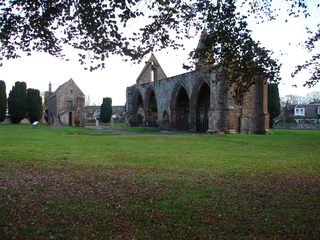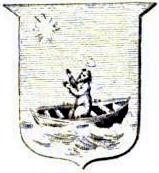The Archdeacon of Argyll (or Lismore) was the only archdeacon in the diocese of Argyll, acting as a subordinate of the Bishop of Brechin. Regarding his supporting churches, it is known that archdeacon held a quarter of parish church of Eilean Munde as a prebend. [1]
An archdeacon is a senior clergy position in the Syriac Orthodox Church, Church of the East, Chaldean Catholic Church, Anglican Communion, St Thomas Christians, Eastern Orthodox churches and some other Christian denominations, above that of most clergy and below a bishop. In the High Middle Ages it was the most senior diocesan position below a bishop in the Catholic Church. An archdeacon is often responsible for administration within an archdeaconry, which is the principal subdivision of the diocese. The Oxford Dictionary of the Christian Church has defined an archdeacon as "A cleric having a defined administrative authority delegated to him by the bishop in the whole or part of the diocese." The office has often been described metaphorically as that of oculus episcopi, the "bishop's eye".

The Diocese of Argyll was an ecclesiastical territory or diocese of Scotland in the Middle Ages. The Diocese was led by the Bishop of Argyll, and was based at Lismore.

The Bishop of Brechin is the ecclesiastical head of the Diocese of Brechin or Angus, based at Dundee. Brechin Cathedral, Brechin is a parish church of the established (presbyterian) Church of Scotland. The diocese had a long-established Gaelic monastic community which survived into the 13th century. The clerical establishment may very well have traced their earlier origins from Abernethy. During the Scottish Reformation, the Presbyterian Church of Scotland gained control of the heritage and jurisdiction of the bishopric. However, the line of bishops has continued to this day, according to ancient models of consecration, in the Scottish Episcopal Church.





